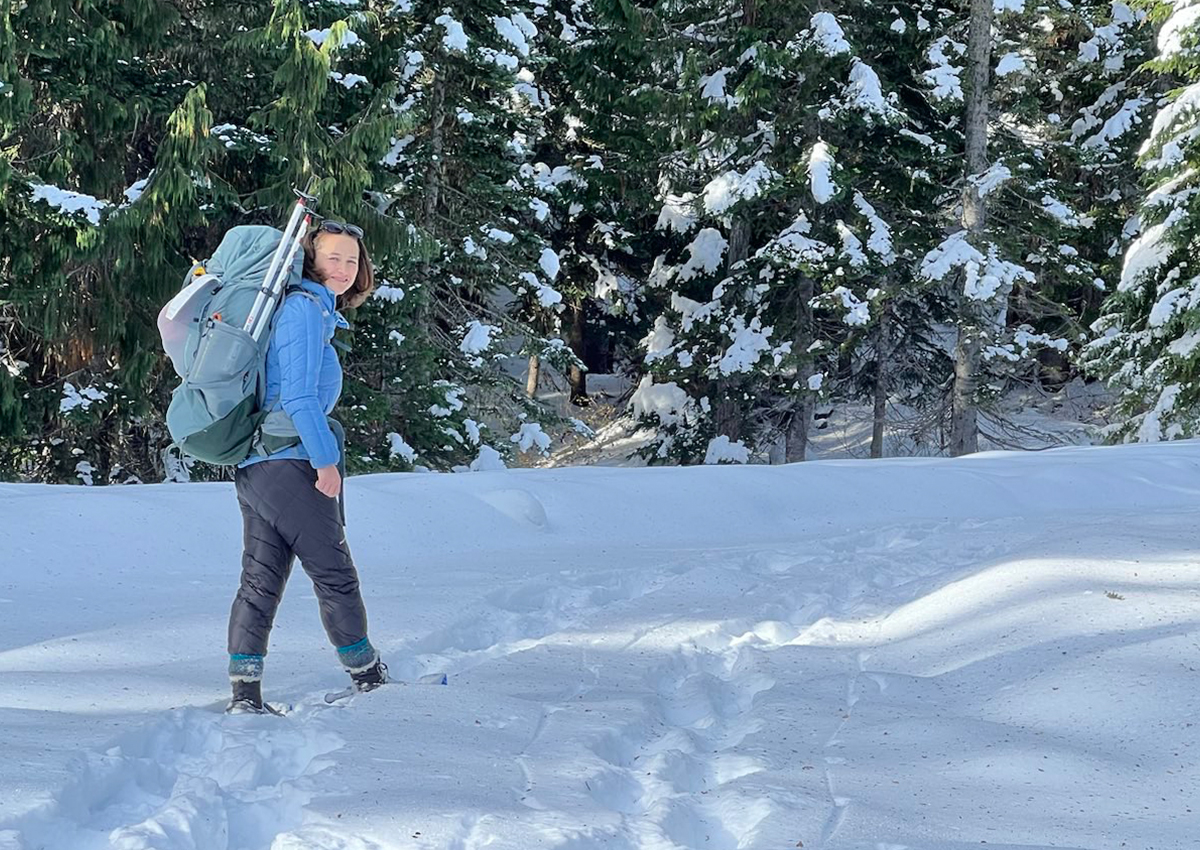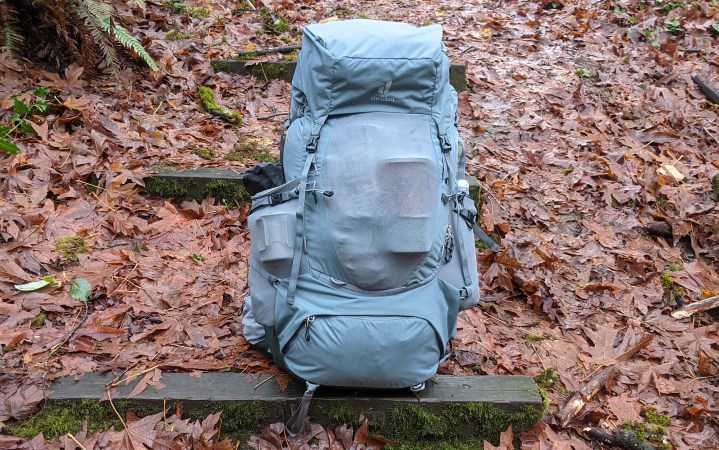We may earn revenue from the products available on this page and participate in affiliate programs. Learn More ›
The Deuter Aircontact Core is one of the most popular and ubiquitous backpacking backpacks on the market—you’ll see it everywhere from flights to thru-hikes. It’s known for its fit customization and ability to handle heavy loads, making it a popular choice for traditional-style backpackers. Many people also appreciate the aesthetics of its comparatively tall and slender build. To see how this unique design fared across different body types, our three testers headed out into shoulder-season conditions to put the Deuter Aircontact Core to the test.
Deuter Aircontact Core 60 +10 Specs and Key Features
Deuter Aircontact Core
- Capacity: 60 liters (can expand to 70 liters)
- Weight: 5.1 pounds (4.7 pounds for the women’s fit)
- Unisex Torso Fit: 16.5 to 24.5 inches
- Women’s Torso Fit: 14 to 22 inches
- Fabric: 500D polyamide and 235D polyamide
- Frame: Spring steel
- Pockets: Two top lid pockets, two side stretch pockets, front mesh pocket, two hip belt zip pockets
- Adjustment Points: Attached hip belt, shoulder straps, load lifters, adjustable back panel, sternum strap
- Bladder Compatible: Yes
- Bear Can Compatible: Yes, vertical only (tested with a Bear Vault 500 and Counter Assault Bear Keg)
- Comfortable up to 45 pounds (as reported by the testers)
One of the first things you notice about a fully loaded Deuter Aircontact Core is its profile. Whereas the classic image of a backpacking backpack has it bulging out on all sides, a fully packed Aircontact is quite slender. However, at 4.5 pounds for a 55-liter pack, it’s on the heavy side, which was noticed by our smallest tester. Some of that is the frame of the pack, part of which is made out of steel, but the carrying capacity of this backpack also increases its weight: The model our testers took out can expand from 60 liters to 70 liters (hence the +10), which is enough for trips that are five days or longer.
Part of the carrying capacity of this pack is in a number of pockets—two side mesh pockets, a front mesh pocket, a top lid with zip entries on either side, and two hip belt pockets—that complement a number of popular and useful features: a sleeping bag compartment, modular straps, and a mesh back panel, to name a few.
About This Backpack Test
With plenty of backpacking gear, it’s possible to quantify what the “best” products are in any category. The best backpacking water filters need to be able to perform reliably across a wide variety of water sources. The best tent stakes need to have great holding power at a low weight. The best bear cans need to be able to keep bears out of your food. But what makes for the best backpacking backpack is more subjective.
First you have to consider everything you are carrying: a 20-pound overnight load carries a lot differently than 40 pounds of gear for a weeklong trip. Then there is how you pack that gear into your pack—do you use a water bladder or Nalgenes? Are you carrying lots of layers that you’ll need easy access to, or are you hiking in a fair-weather climate? But the biggest X factor of all is you: the padding, hip belt length, torso width, and shoulder strap curve all vary between backpacks, and choosing a backpack that’s wrong for your frame can result in everything from back pain to bruising.
To help find the best backpacking backpack for each body type, we selected a panel of testers across a wide range of body types and experiences, who will test a series of backpacks throughout the year. Once all bags are tested we’ll pool the results into a best backpacking backpacks article.
Our Testers
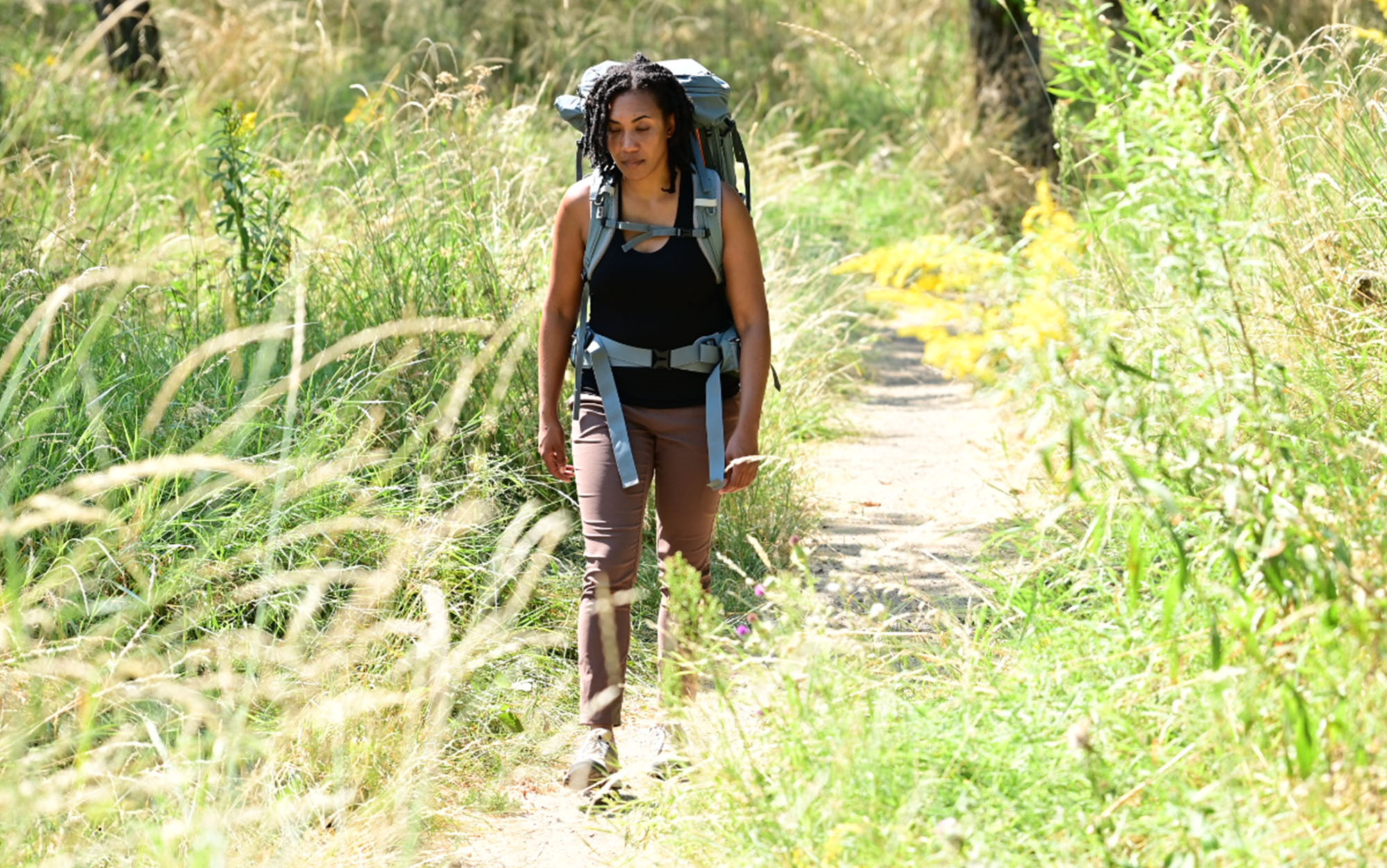


Rebecca Ross is a backpacker, climber, mountaineer, and runner who is a staff writer for GearJunkie and has contributed to Climbing magazine, and Melanin Base Camp.
Diana Helmuth has hiked extensively throughout the western U.S., Europe, and Chile and is the author of How to Suffer Outside, which won a National Outdoor Book Award.
Jason Boyle has been backpacking, hiking, and trail running for 30 years and currently works as a guide for REI out of Shenandoah National Park.
Testing the Deuter Aircontact in the Field
Our testers had very different experiences with this pack, ranging from trip-ending discomfort to three days of pain-free guiding with a pack that weighed upwards of 40 pounds.
| Category | Rebecca | Diana | Jason | Average |
| Fit: Could you adjust it to your satisfaction? | 3 | 8 | 10 | 7 |
| Comfort: Did the pack cause you any pain or discomfort? | 1 | 8 | 9 | 6 |
| Load Bearing: How did it handle a heavy load? | 9 | 9 | 9 | 9 |
| Storage: Did the pack adequately hold all your gear? | 9 | 10 | 8 | 9 |
| Accessibility: How easy was it to access all your gear in the field? | 7 | 7 | 8 | 7.3 |
| Value: Is it worth the money? | 3 | 8 | 8 | 6.3 |
| Overall | 1 | 8.3 | 9 | 6.1 |
To understand why the testers had such different experiences, let’s look at how the pack is designed.
Fit, Comfort, and Load Bearing
This pack has a fairly robust frame: two steel bars against a stiff back panel, which is overlaid by a second back panel with sections cut out of it—the shoulder straps are tucked in between the two panels. The shoulder straps can be adjusted by holding up an orange latch and then pulling up or down on a gray tab.
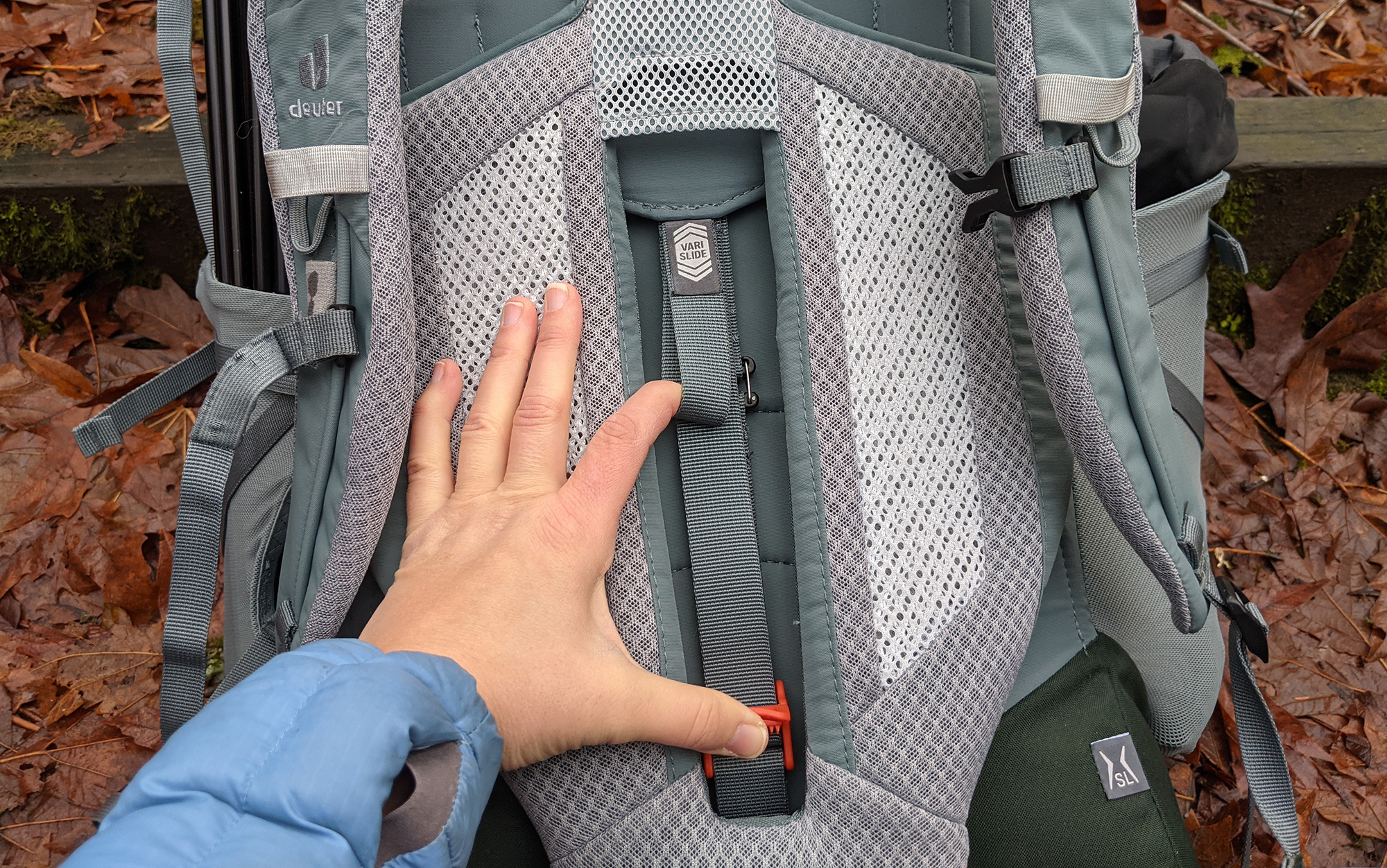
There are no measurements on the back panel itself, so fitting it to your torso length ends up being trial and error. But once they had the torso length dialed in, the testers noted that it didn’t slip while they were hiking.
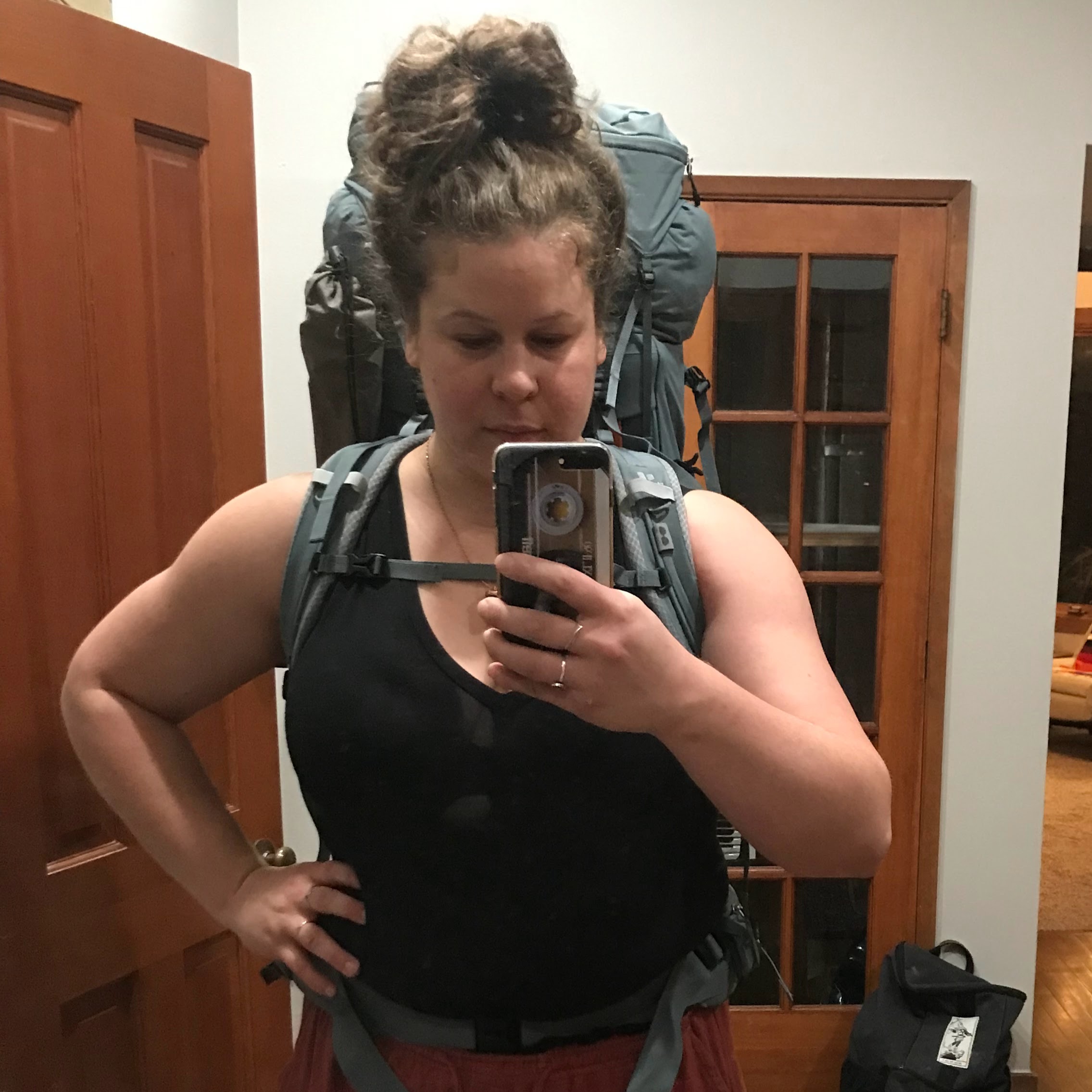
The top of the backpack frame is ever so slightly curved, which helps to keep the main body of the pack off your back (reducing the amount of friction your shoulders and back will experience, useful if you are working up a sweat). For Jason and Diana, the curve of the backpack wasn’t a problem, with Diana describing it as providing meaningful airflow. But for Rebecca, who has a significantly shorter torso than the other testers, this resulted in a serious problem: When the shoulder straps were pulled all the way down, to fit her smaller frame, the top of the pack landed in the middle of her head, forcing her to keep it bent forward as she hiked. She reported that this ended up turning her overnight backpacking trip into a day hike because it was so uncomfortable.
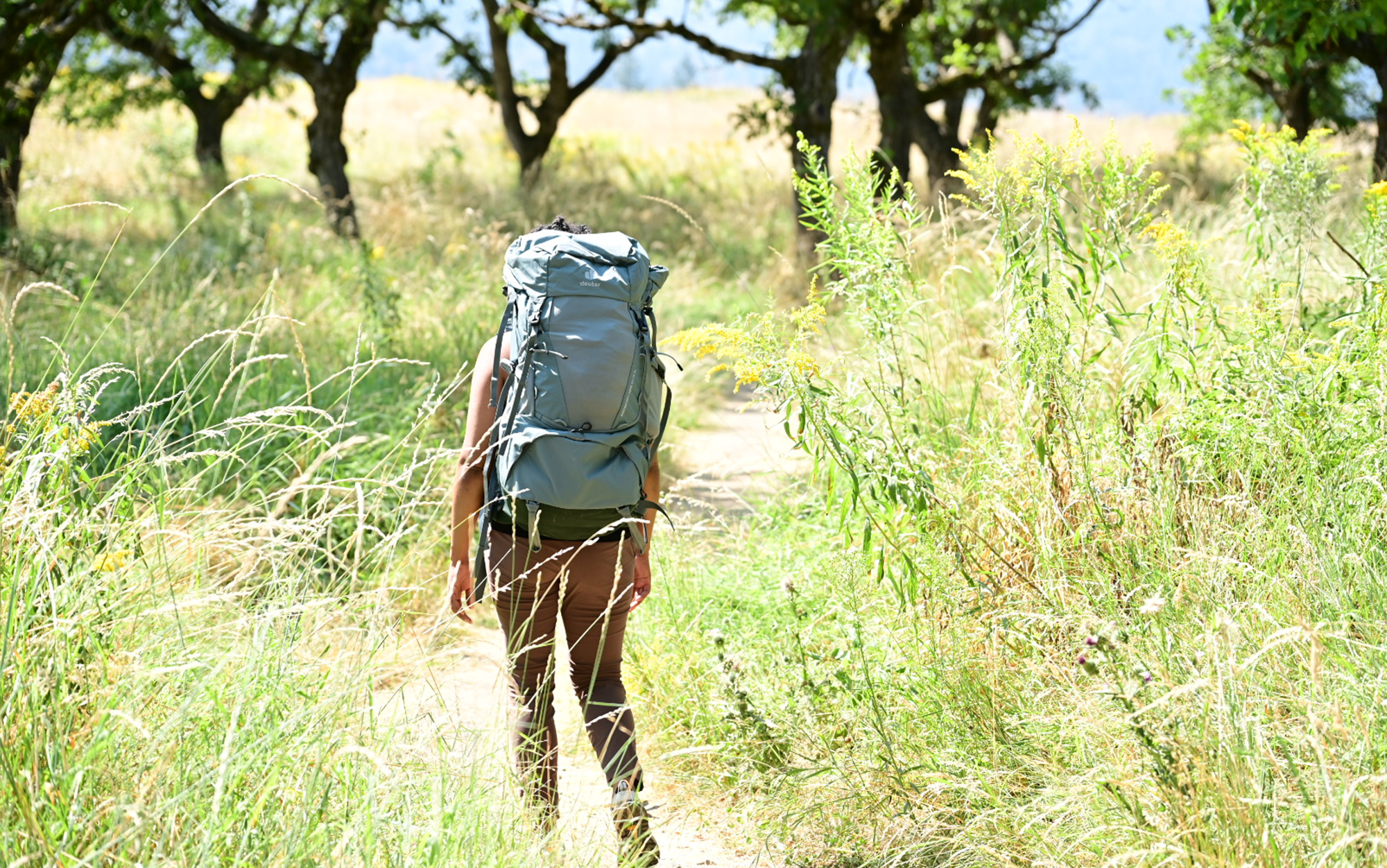
Despite testing a “slim fit” model of the Deuter Aircontact Core, Rebecca’s experience overall was poorer. She found that it took multiple tries to get the fit right for her body. Despite that, the pack unbalanced easily.
“I put an empty 1-liter water bottle on one side and a full 1-liter water bottle on the other side and found that this difference in weight caused my backpack to shift,” she said. While Rebecca said that she didn’t notice this tilt at the time, “In photos, it was incredibly noticeable to the point that it should have made me feel it.”
While all three testers reported stashing water bottles in both side mesh pockets, this shift in the backpack’s weight was not reported by either Jason or Diana. One cause could be the streamlined profile of the backpack, which is noticeably narrower than other packs with similar capacities. A narrower backpack will tend to respond more to even slight differences in the weight on either side (including the side mesh pocket) by tilting in one direction or the other. Since Rebecca’s frame is on the narrower side, it did not provide any appreciable width for the backpack’s weight to distribute out over. Conversely, Diana and Jason’s larger hip circumference provided a wider base for the pack’s overall weight, so slight changes in the weight of the side mesh pockets were less noticeable.
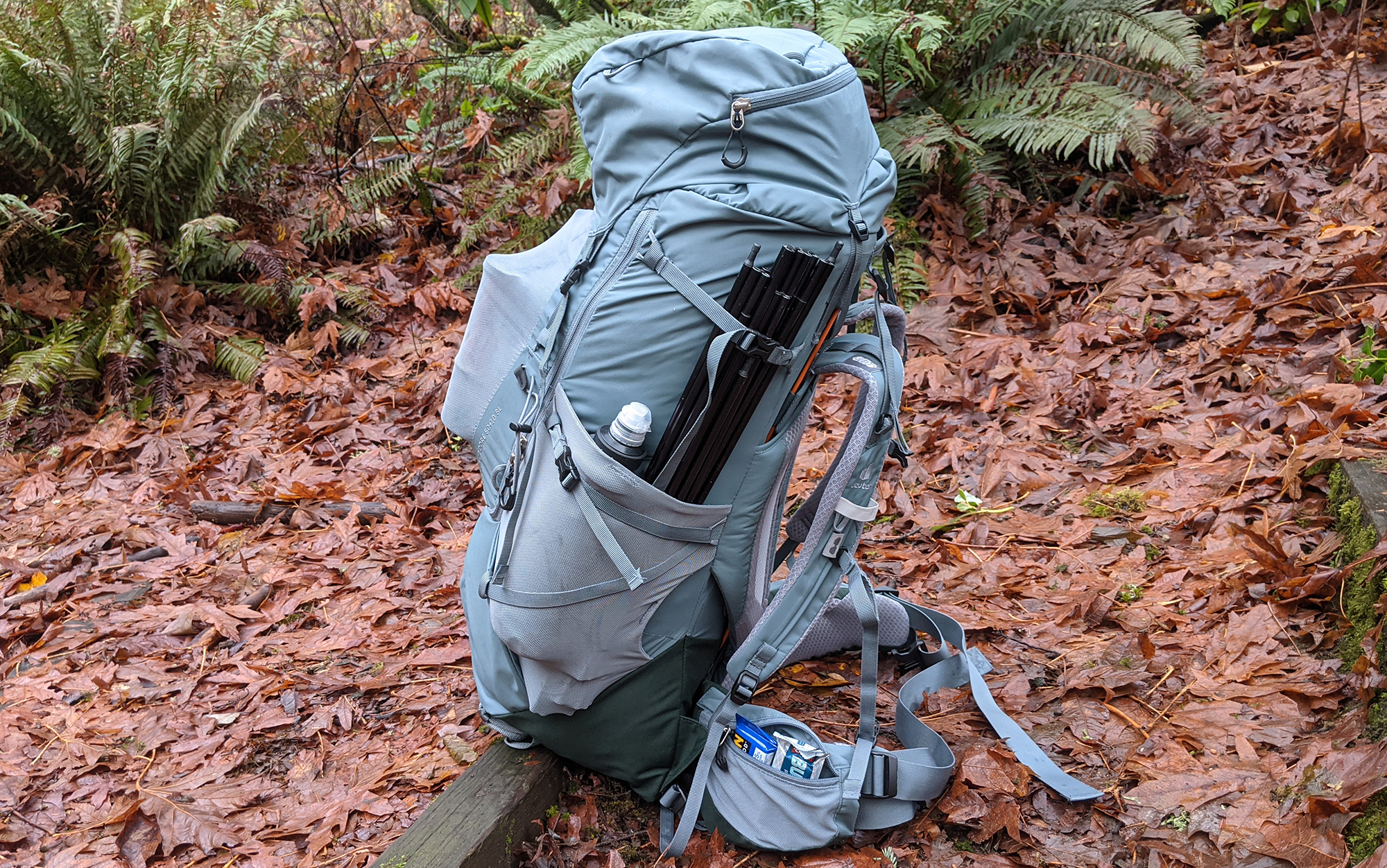
Diana, who hiked 25 miles over three days around Olympic National Park, noted that on day two of testing there was some tension in her right shoulder and clavicle while carrying 35 pounds of weight. The slight curve of the Deuter Aircontact’s frame will cause the weight of the pack to pull back more at the shoulders than other packs with a straighter frame (the trade-off for what Diana described as “significant airflow” along the back panel). This will tend to affect women more than men, as women have narrower, more pronounced clavicles than men. Diana reported that the initial discomfort from this had diminished by the third day of her hike (perhaps in part because her pack was now five pounds lighter); backpackers who know they have sensitive or especially prominent collarbones should take note.
Jason, on the other hand, had a near-perfect experience with this pack. “The hipbelt snugs nicely on my hips and transfers the load,” he said. “It was easy to get this one to fit correctly.”
Jason reported no pain points of any kind over nearly seventy miles of testing, even when carrying weights in excess of 40 pounds.
“I was a little concerned with the pack at first since it was a women’s slim fit,” he said. “However, after adjusting it for my torso length I found that the pack fit very well. And no matter how much weight I was carrying, I never really felt it.”
He did note that the mesh pockets had some durability issues: “I ripped a large hole in the right hip belt pocket on my first trip. I went off trail to use a facilitree and had a branch go through the pocket as I pushed through some brush.” This is a fairly common issue that backpacks with stretchy mesh pockets have, however, and Jason did note that, “Other than that, the pack looks new, even with 65+ miles on it.”
Storage and Accessibility
While most backpacking backpacks only have a top entry, there are three ways to get at your gear in the Deuter Aircontact. In addition to a drawstring closure at the top of the pack, there is an undercarriage zipper, complete with a separate sleeping bag compartment, and a front J zipper. While the addition of all these different entry points contributes to the overall weight of the pack, this does allow individuals to access gear in parts of the Deuter Aircontact without the need to unpack what’s at the very top (especially useful if you’re packed for a trip that is slated to last five days or more).
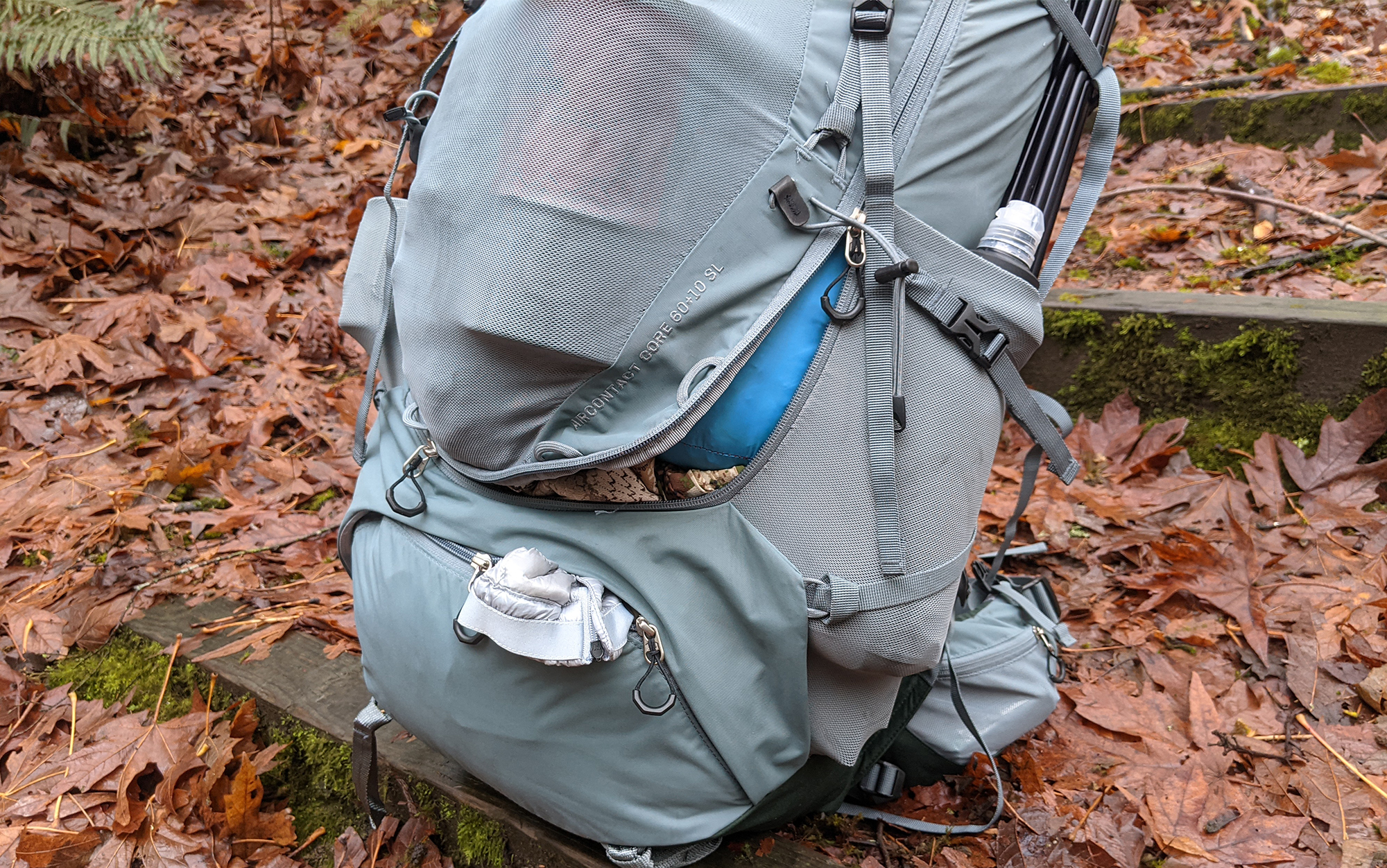
The Deueter Aircontact also has a generous brain, or top pocket, complete with zip entry on both the top and the bottom side, which the testers used to hold everything from their headlamp and journals to their first-aid kit and bathroom bag (on opposite sides of the top pocket). Rebecca also noted that the loops on the top would “be very helpful for a climbing trip if I had to carry a rope.”
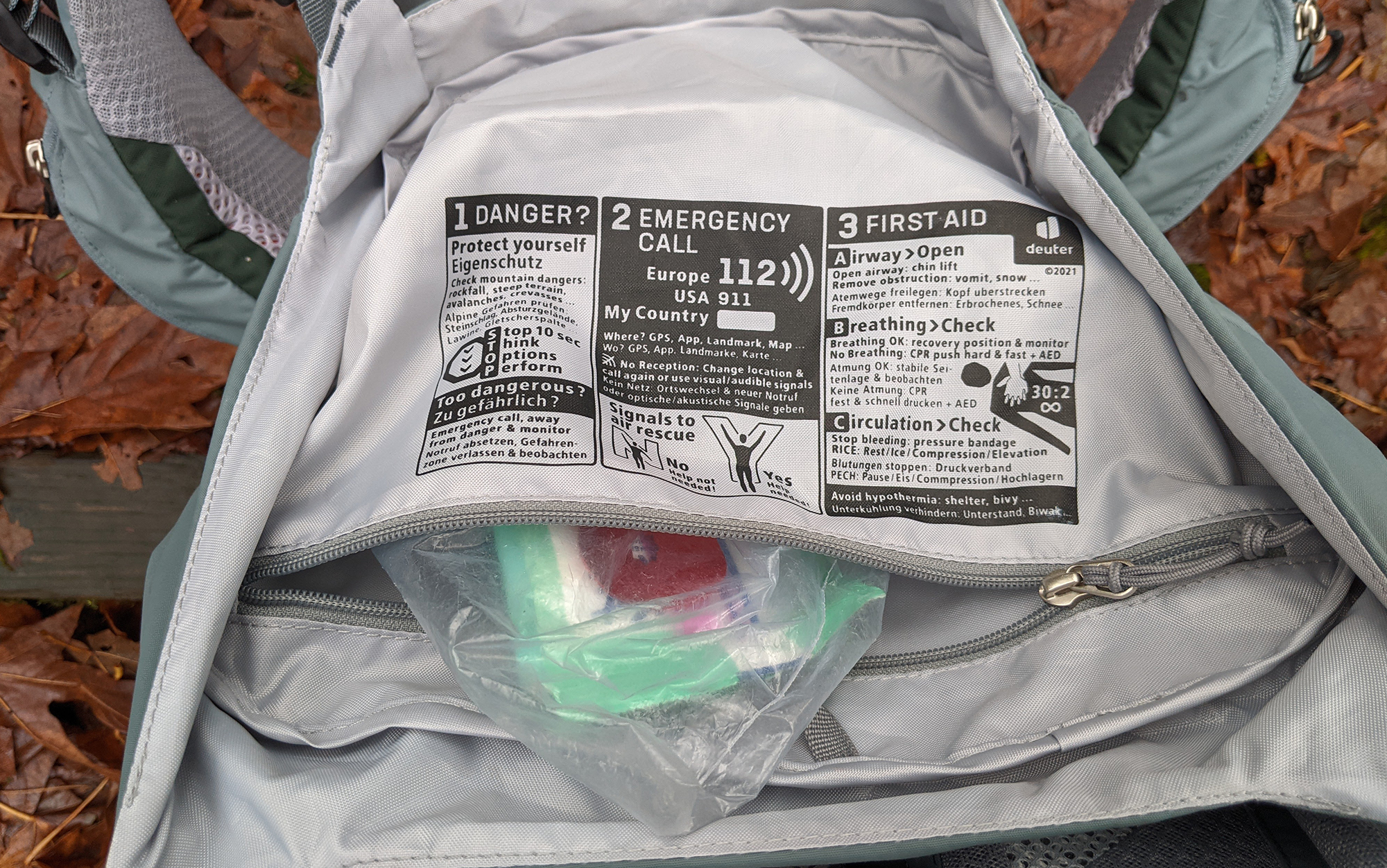
Testers made equal use of a surprisingly generous front mesh pocket, which could easily hold a water filter, first-aid kit, and shell layer. However, testers noted that it was difficult to get into the front pocket when the bag was fully packed, as the top lid covered the opening of the mesh pocket.
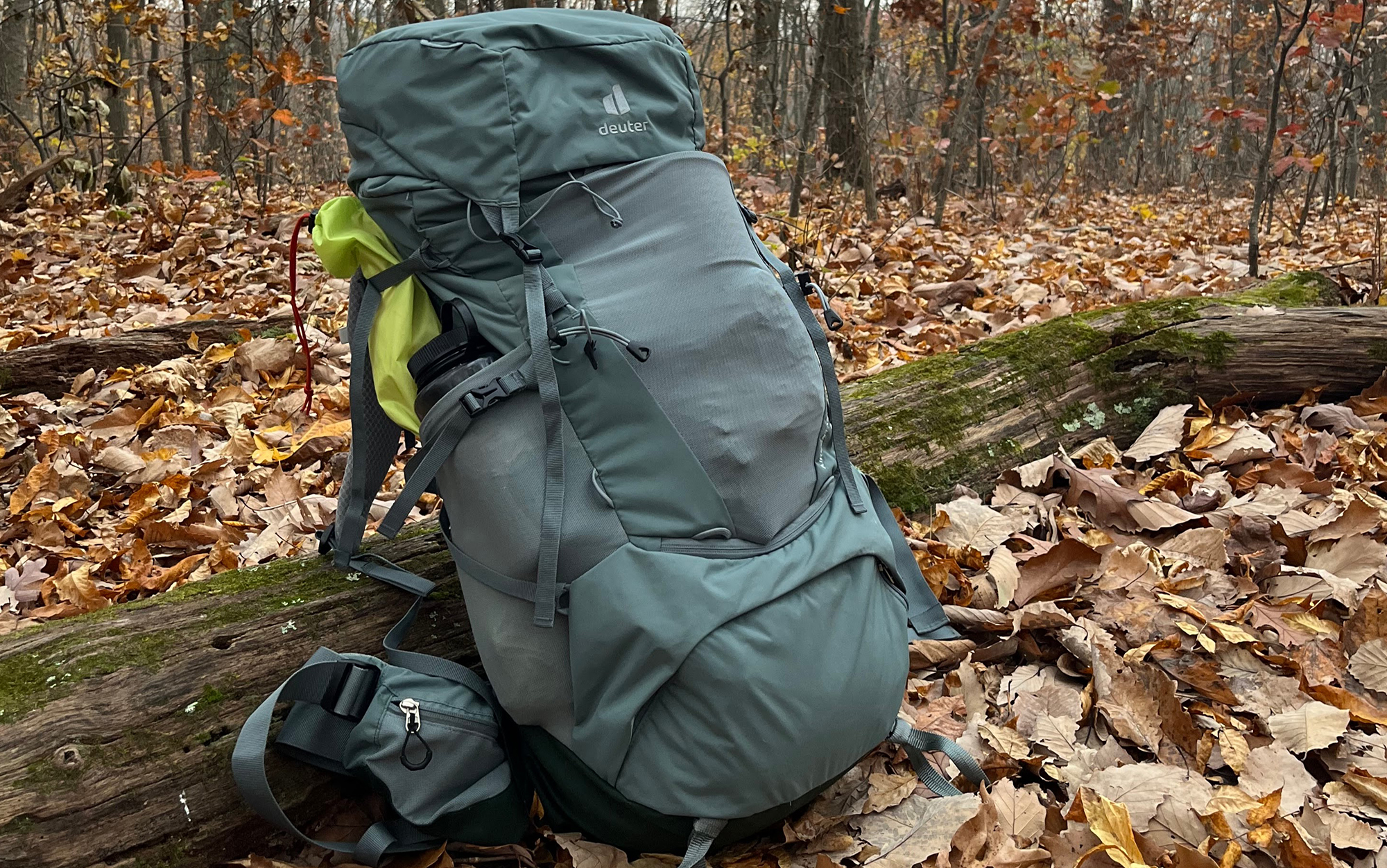
Testers had mixed feelings about the side mesh pockets. Rebecca liked their depth but felt that it was difficult to access items out of them while hiking, something the out-of-the-box placement of the compression straps made more difficult. And while the right-hand side mesh pocket does have an opening to access a water bottle out of, they were difficult to use for that purpose when the bag was fully packed.
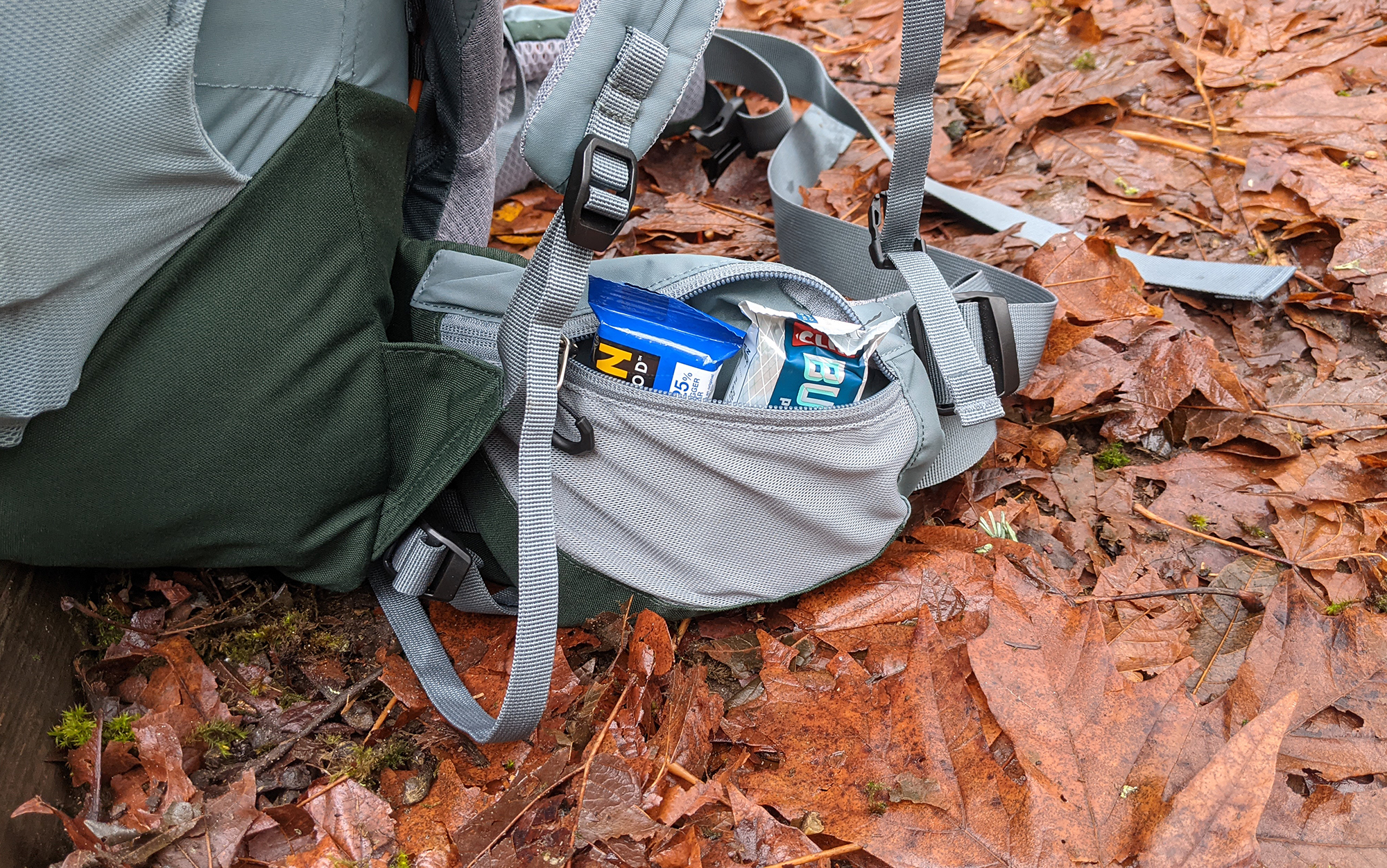
The testers found the hip belt pockets to be on the small side, with Jason noting that they only hold a couple of bars or smaller snacks. Diana also found them to be set toward the back of her hips and that the zipper was only partially accessible when the pack was on her body. That made it difficult for her to access them while hiking (and, to an extent, defeating their purpose). That being said, she had no issues with the comfort or fit of the hip belt itself.
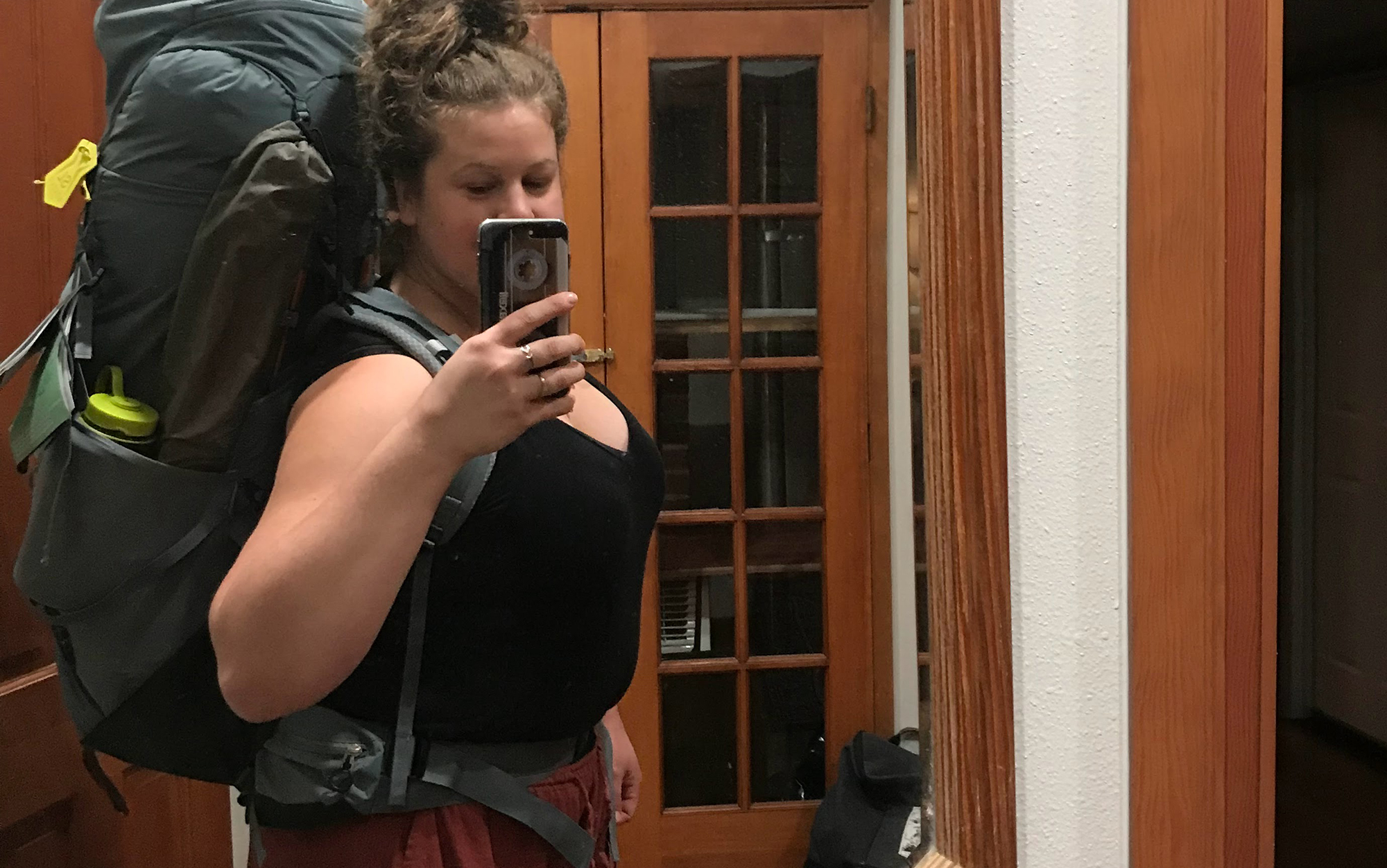
Other features were lacking or difficult to use, including the somewhat hidden port for the hydration bladder in the extension collar, which Jason noted was not obvious. There was also no whistle on the sternum strap, so be sure to pick up an equivalent before heading out on your trip.
One of the features our testers were the most impressed with were the modular gear straps. Whereas on most packs, the tie down and compression straps are fixed on the pack, on the Aircontact you can move them around (or remove them entirely) depending on your needs.
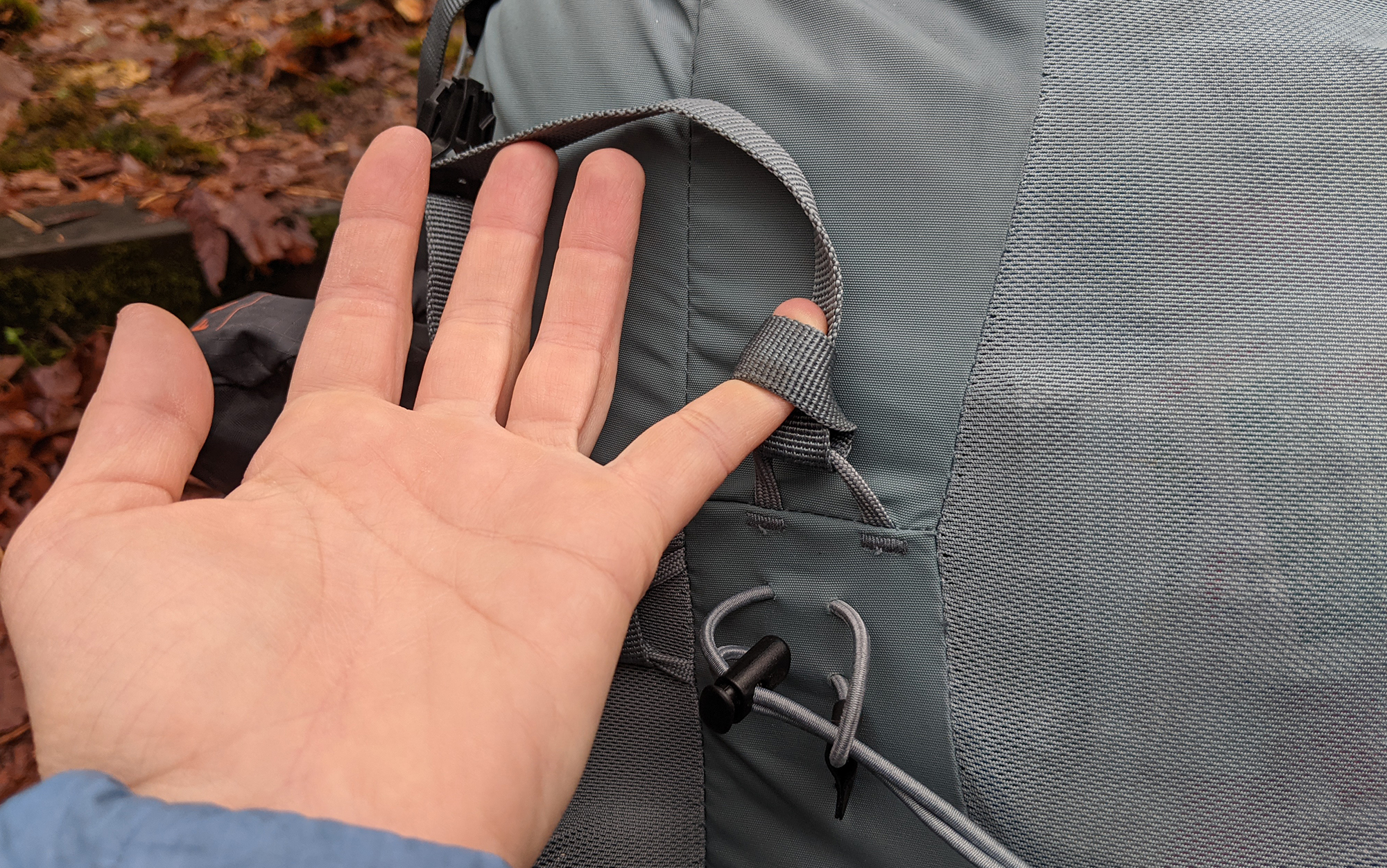
This feature helps to elevate the Deuter Aircontact from an entry-level backpacking backpack to one that you can grow into, adjusting it to suit your needs as you learn more about your backpacking style. ”I think this is an ingenious feature,” said Jason, who leads guiding trips in Shenandoah National Park. “Sometimes, I need to strap things to the outside but traditionally sewn straps don’t allow me to … with the modular system I can customize my needs. Maybe I need to carry an extra sleeping bag or tent because a guest can’t or their pack broke … Now I can set up my pack to easily carry more stuff, rather than just have an awkwardly balanced pack.”
Final Thoughts
Rebecca’s take: “I thought there were clever features, but the internal bar hitting my head and the almost extreme weight of the pack were dealbreakers for me.”
Diana’s take: “The pack fit splendidly, but the hip belt pockets were not useful on my wider woman’s frame.”
Jason’s take: “This is my favorite so far. The pack fit so well; I could almost forget it was there.”
Despite its slender design, it was clear from the testers’ feedback that the Deuter Aircontact is not a good fit for those with smaller frames—thinner individuals will struggle with the pack’s balance while shorter individuals may find that the curve of the back panel negatively impacts their posture while hiking. Where this pack shines, however, is in its load-bearing capacity, with testers reporting that it successfully handled the heavier loads they were carrying during their shoulder-season treks. While their experience of the pack’s features were hit-and-miss, it earned top marks for organization and versatility.
Something worth noting is that even though Jason tested an SL version of the Deuter Aircontact Core (which is designed for women’s anatomy), he had a better experience with the pack than either Rebecca or Diana. It should be noted that the Aircontact does very little (if anything) to visually distinguish the SL pack from the regular version. Men whose torsos are too short for the standard version of the Deuter Aircontact should consider the SL model instead.
